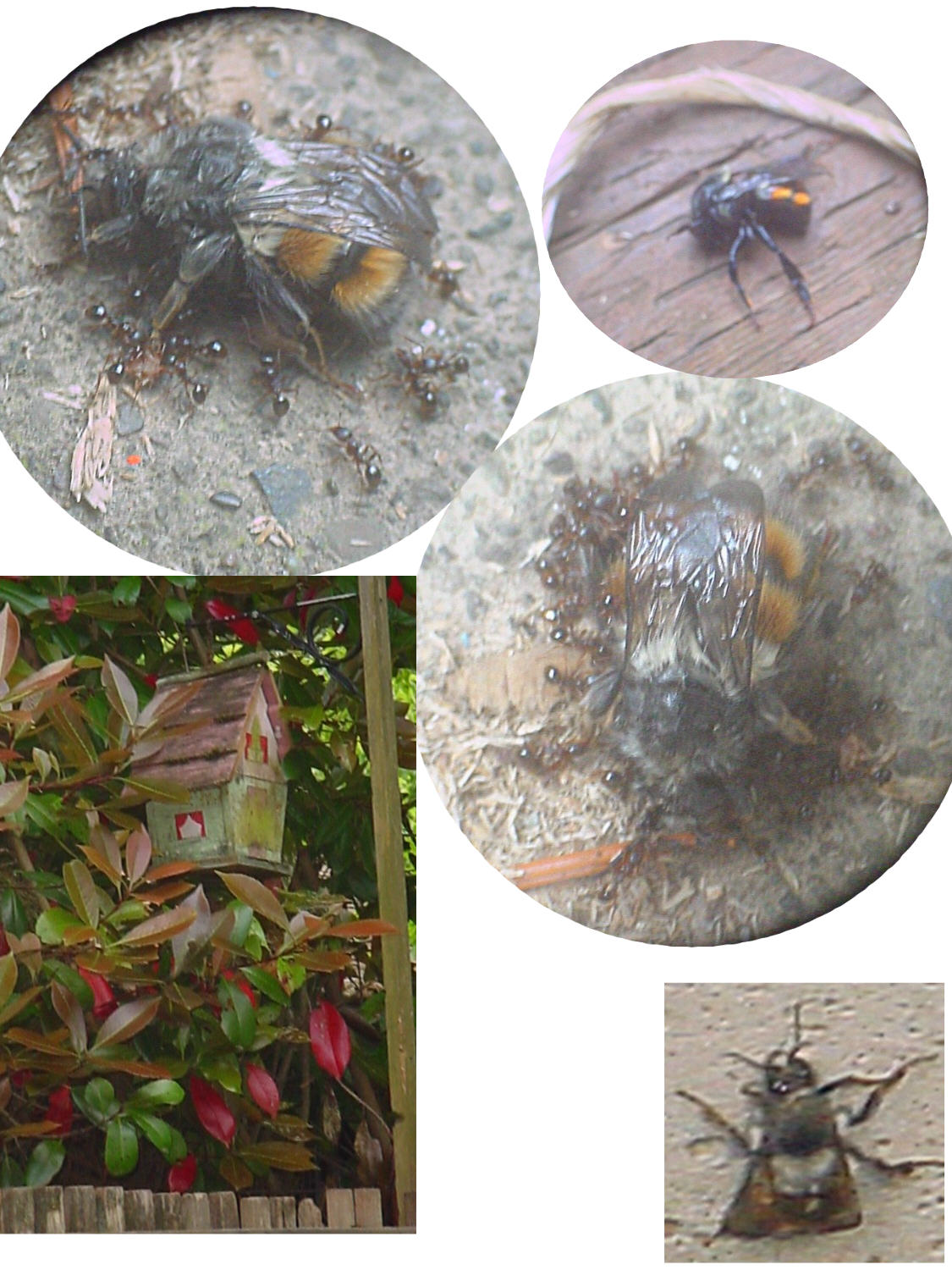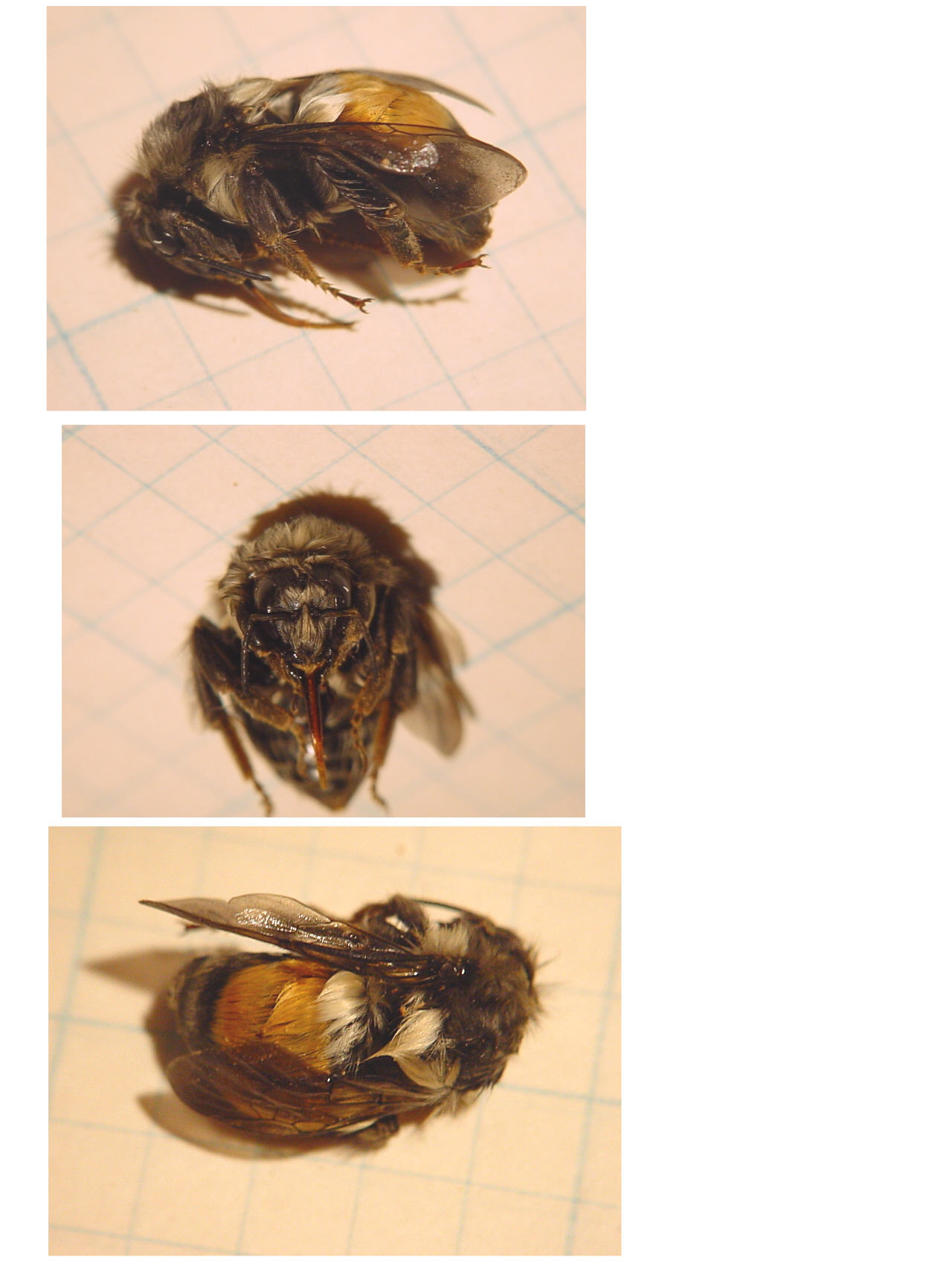Bumble Bees (Bombus spp.) on May 27, 2008
Submitter has sample
Description of specimen
extremely large, dying, bees. I have a small colony of honey bees living in a bird house(see picture). These bees are green pee size, docile, and very happy collecting pollen and bringing it back to the house. Today I found these huge bees crawling away from the hive, 3 living, one dead. I believe they are attacking the hive and being defeated, so far. I have lived in oregon over 30 years and never seen a bee this big (Besides the bumble bee). Sugar ants are eating the bee in one picture. another was crawling up the foundation of the house. The curled one I hit with bee killer. I am using a IPA soaked sponge and a jar to try and preserve another one.



Reporter
May 27, 2008, 12:08 p.m.
Lisa DeBruyckere
May 27, 2008, 11:45 p.m.
Reporter
May 28, 2008, 6:43 a.m.
This species of bumble bee is commonly known as the orange-rumped bumblebee, and is a species of bumblebee native to western North America from British Columbia to California and as far east as Idaho. They live in organized groups, with a queen, drones, and workers.
A September 2006 report for the California Department of Agriculture said this about competition between introduced honey bees and native bumblebees: "The negative effect of competition of food sources presumes that the availability of food sources is limited. In the case of introduction in agro eco-systems with a pollination deficit this would not be the case."
Here's another good website on native bumblebees: http://www.fs.fed.us/wildflowers/pollinators/pollinator-of-the-month/bumblebees.shtml
Lisa DeBruyckere
May 28, 2008, 9:37 a.m.
I am disappointed that my birdhouse hive of honeybees is now quiet. For 2 weeks the hive was buzzing with activity. Then something happened, because I no longer see any bees at all. I know if the hive mooved or was killed off by the bumble bees.
Reporter
June 16, 2008, 2:22 p.m.